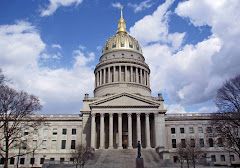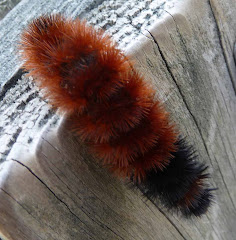The Ocala National Forest holds the distinction of being the only National Forest within the National Forest System that is sub-tropical. It comprises almost 400,000 acres, and is located in Central Florida just above that tourist “mecca” Orlando (aka Disney World and Co.). The Ocala National Forest was established in 1908.
We have been to and through the Ocala National Forest several times before. Most recently, in 2007, we paused for a brief hike/excursion in the Juniper Springs area. This past fall, we stopped at the Silver Glen Springs area and hiked from the springs out about a mile to Lake George.
We ate lunch, where else,
 alongside the Silver Glen Spring. It was a beautiful spot and the spring was, well, pretty much like several other springs I have seen in Florida. The water was clear and appeared to have a blue-greenish, almost a turquoise, tint. It was warm enough that there were swimmers in the swimming area. I know that most people think about beaches and amusement parks when they think about Florida. But I would suggest that they need to be like the early Spanish Explorer, the purported “discoverer” of the place, Ponce De Leon and go searching for its springs. You may not find "a fountain of youth" but you surely will find some beautiful scenery!
alongside the Silver Glen Spring. It was a beautiful spot and the spring was, well, pretty much like several other springs I have seen in Florida. The water was clear and appeared to have a blue-greenish, almost a turquoise, tint. It was warm enough that there were swimmers in the swimming area. I know that most people think about beaches and amusement parks when they think about Florida. But I would suggest that they need to be like the early Spanish Explorer, the purported “discoverer” of the place, Ponce De Leon and go searching for its springs. You may not find "a fountain of youth" but you surely will find some beautiful scenery!Next we hiked along a trail which left the spring area, climbed a short distance over a hammock, and then began a slow descent toward our destination, Lake George. The hike was unlike my earlier hikes in the Ocala forest. At Silver Glen Springs we were walking through pure forest and not following a spring, creek or any type of water-course. Further, the vegetation around us was decidedly sub-tropical.
The h
 ighlight of our time on the trail however, occurred about ½ out to Lake George. We had heard an unusual bird call, and had stopped for a moment. I was looking around attempting to locate the originator of the sound, when all of a sudden, a large brownish bird took flight from a nearby tree. As it became airborne, I saw the unmistakable white patches that mark the colororation of the American Bald Eagle. Of course it quickly flew away, but nevermind, I had been very close to it, the closest I have ever been to a Bald Eagle in the wild. It was an awesome sight.
ighlight of our time on the trail however, occurred about ½ out to Lake George. We had heard an unusual bird call, and had stopped for a moment. I was looking around attempting to locate the originator of the sound, when all of a sudden, a large brownish bird took flight from a nearby tree. As it became airborne, I saw the unmistakable white patches that mark the colororation of the American Bald Eagle. Of course it quickly flew away, but nevermind, I had been very close to it, the closest I have ever been to a Bald Eagle in the wild. It was an awesome sight.About a half mile more and we walked
 through a low marshy area and finally arrived at the shores of Lake George. Lake George is just one of many lakes that are located along the course of the St. John’s River. The St. John’s River, is, in reality, an ancient intracoastal lagoon system. As it flows northward along its 310 miles up through the eastern part of Florida, it enters and leaves several lakes. Because of this, it is often called “The River of Lakes.” Lake George is the 2nd largest lake in Florida (Okeechobee is the largest), and the largest of the lakes in the St. John’s system. Lake George is noted, among other things, for its bass fishing.
through a low marshy area and finally arrived at the shores of Lake George. Lake George is just one of many lakes that are located along the course of the St. John’s River. The St. John’s River, is, in reality, an ancient intracoastal lagoon system. As it flows northward along its 310 miles up through the eastern part of Florida, it enters and leaves several lakes. Because of this, it is often called “The River of Lakes.” Lake George is the 2nd largest lake in Florida (Okeechobee is the largest), and the largest of the lakes in the St. John’s system. Lake George is noted, among other things, for its bass fishing.After a few minutes spent admiring the lake, (for we had no tackle, nor did we have a Florida Fishing License) we returned from whence we came and continued our journey on to the north, Jacksonville Florida (and co-incidentally up the St. John’s River).








